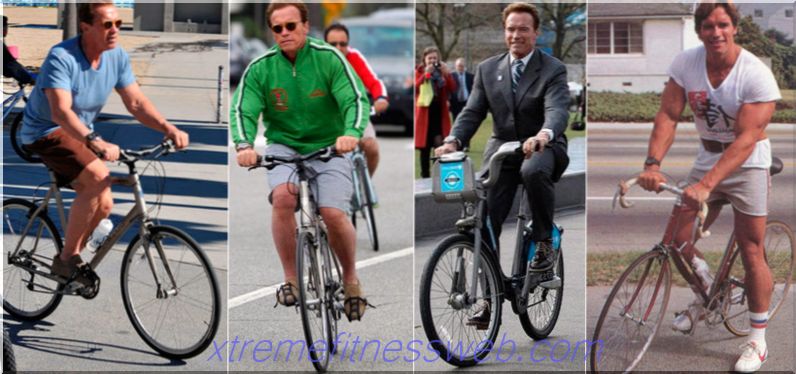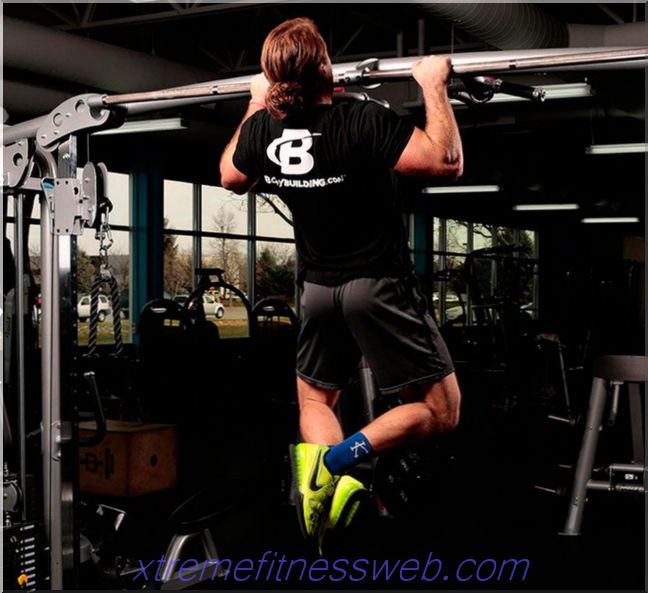
Performing exercises on a block simulator allows you to diversify the training program and improve progress in building muscle volume. The peculiarity of such classes is that they are fundamentally different from training with free weights.
Blocks in the simulator can be pulled back and forth, sideways, down and up. Free weights do not give such flexibility, and muscles do not receive such versatile development. The muscles are completely worked out when the athlete is engaged in a block simulator.
Lifting the bar for biceps and performing bending of the arms in the crossover while standing have some differences in the technique of movement, and, consequently, in the impact on the muscles. This also applies to the information of the hands in an incline, which they do in the simulator, which differs from the usual information with dumbbells, since the pectoral upper muscles work somewhat differently.
The variability of the positions that block simulators provide is the main and main advantage of this sports equipment. Classes on the blocks can stimulate the growth of muscle volume. Athletes who previously worked only with free weights achieve a particularly high effect.
Content
- 1 Top Ten Block Exercises
- 1.1 №1 Thrust block to the belt from a sitting position
- 1.2 №2 Traction of the lower block to the chin
- 1.3 №3 Thrust of the upper block to the chest
- 1.4 №4 Bending the arms in a crossover from a standing position
- 1.5 №5 Reduction of hands in the crossover
- 1.6 №6 Triset
- 1.7 №7 Twisting on a press in a crossover
- 1.8 №8 Extending arms with a rope in the crossover
- 1.9 №9 Leverage and bringing the arm in the crossover
- 1.10 No. 10 Lower link between the legs
- 2 Summary
Top Ten Block Exercises
They are a selection of the most effective exercises, which for one reason or another, disclosed in the presented description of each, should be included in the main training program for muscle gain.
No. 1 Block pull to the belt from a sitting position

It is a multi-joint exercise, which is aimed at training the back with the involvement of several muscle groups, allowing you to use fairly heavy weights. It, unlike single-joint, stimulates the production of much more testosterone and growth hormone in the body of athletes. This has a positive effect on muscle growth. You can work with both the lower and upper, and with a narrow and wide grip.
This exercise is best done at the end of a back muscle training session. First, you need to work with heavy weights, performing deadlift, draft in tilt with a bar, supplementing with a t-bar thrust if possible. Extension of the range of movements is carried out by performing exercises with one hand.
No. 2 Traction of the lower block to the chin

Aimed at the study of the shoulder girdle. It is one of the best ways to engage and train the middle bundle of the deltoid muscle group. It gives the greatest effect with a wide grip. Achieving maximum isolation is carried out when one of three positions is taken - standing with cables (two), on the floor, sitting. Execution with a fingerboard having rotating handles allows you to reduce the load exerted on the wrists.
This exercise is best done before a single joint on the delta and after heavy presses over your head. It is often used as a closing dropset when they want to work out the maximum bundles of deltoid muscles to the maximum.
No. 3 Thrust of the upper block to the chest

Working with free weight involves moving the arms perpendicular to the torso. In this back exercise with a block exercise machine, the amplitude is much larger. In addition, the athlete has the opportunity to experiment with various grips and neck types, which is also an indisputable advantage.
Many athletes perform this exercise as a warm-up on the shoulder girdle, as it has a high range of motion. And if ordinary pull-ups make it difficult to increase the load, then on the blocks it is much easier to make heavy approaches. The pull of blocks to the chest can be done after exercises with free weight, which follow the warm-up.
No. 4 Bending the arms in a crossover from a standing position

This is perhaps one of the best variations of developing biceps in a simulator such as a crossover. Its high efficiency is due to the ability to change the height of both the block itself and the position of its own body. This exercise will be an excellent choice for those athletes who have a shoulder injury, as it provides the joint with almost complete freedom of movement.
Exercise does not have a high load, great for performing at those moments when there is a need to reduce the intensity. It can be done with the use of fairly heavy weights. The main thing, achieving muscle failure, to be sure that the inertia of movement is not involved.
The latter is due to the fact that due to cheating, the execution technique is violated. This leads to an increased risk of injury. Training with approaches of six or eight repetitions is recommended to be performed with two hands, either with a barbell or with an EZ bar.
No. 5: Reduction of hands in a crossover

Unlike many other exercises on the chest, it allows you to easily change the angle of resistance. If it is necessary to work out the lower part of the pectoral muscles, the blocks are set up, and if the emphasis is on the upper part, then, on the contrary, the blocks are placed below. Similarly, a change of the point of bringing the hands together is required.
It is made the penultimate or final in training. When during the exercise two isolating exercises on the chest are done right away, the muscles should be worked out at different angles. Otherwise, the loads will be unidirectional, which is not effective.
No. 6 Triset

It is a study of the deltas, involving the execution of swings to the sides, raising the arms in an inclination. It is recommended for inclusion in the training, since block simulators were designed specifically for single-joint exercises.
Triset allows you to develop literally every beam of the delta, holding the handle and not releasing it. Hands can be raised and standing, and in an inclination, raise in front of you or do swings to the sides.
With this triset, as a rule, they complete the training. In which part of the lesson do this exercise is not of paramount importance. The main thing is to ensure that the development for each beam is the same, and not different.
No. 7 Twisting on a press in a crossover

It differs from similar exercises performed with its own weight, the ability to conduct training with an unlimited number of repetitions, the number of which depends on the goal set for the athlete, as well as adjusting the maximum loads. Twisting can be performed both on the knees, when the emphasis is on the upper abdominal press, and standing, if you need to work out the oblique muscles.
Exercise in the crossover is done either first or second in the training for working out the abdominal muscles. Taking light weight, increasing due to this the number of repetitions, you can do twisting and closer to the end of the lesson.
No. 8 Extension of hands with a rope in the crossover

The reason for including this exercise in the list of the best is that it allows you to work out the long triceps head as efficiently as possible. This is due to the fact that in a crossover it is much easier to return to its original position than when using an EZ bar or dumbbells. To diversify this extension is possible in several ways, if you stand on your knees or perform it with the use of one hand.
Athletes who work out triceps through multi-joint exercises can do this exercise at any time during training, after the previous ones are completed.
№9 Leading and bringing hands in the crossover

Some athletes believe that performing exercises on the rotational cuff of the shoulder is an extremely waste of time. This is a misconception. This group of muscles and tendons, which together with the deltoid muscles, ensures maximum stability of the shoulder joints, and also reduces the risk of injury.
It is the lack of exercises that allow you to work out the rotational cuff, when the other deltas are given increased attention and become the main cause of problems. This creates an imbalance in the development of muscles, which leads to negative consequences, adversely affects the health of the shoulder girdle. To perform abduction and adduction not in a crossover, but with a dumbbell, you must do this either standing up or lying down.
Five repetitions in each approach as a warm-up should be involved in bringing and leading arms with low weights.
No. 10 draft of the lower block between the legs

The number of exercises for working out the legs that can be done on the crossover is limited and ineffective. Traction with the lower block between the legs is an exception that allows you to get the most benefit. It is similar to the Romanian deadlift, which allows you to work out the back chain, including the buttocks, lower back, upper thighs. To get the greatest effect, you need to keep your back straight, knees bent, do not stretch your shoulders, minimizing them. The correct technique involves the implementation of all movements exclusively by the hips.
It is recommended to do this traction as an addition to the main flexions, since it is they that make the knee joints move. The inclusion of this exercise in the training depends on how the athlete does it. If the athlete is working on the back of the thighs with quadriceps, then before a single-joint exercise, you need to squat and do hyperextension.
Summarizing
Engaged in block simulators is useful not only for experienced athletes, but also for beginner athletes who have just begun to attend the gym. Exercises performed with blocks are considered one of the most effective and best ways to prepare joints, ligaments, muscles for upcoming increasing loads.
Based on materials: bodybuilding.com







